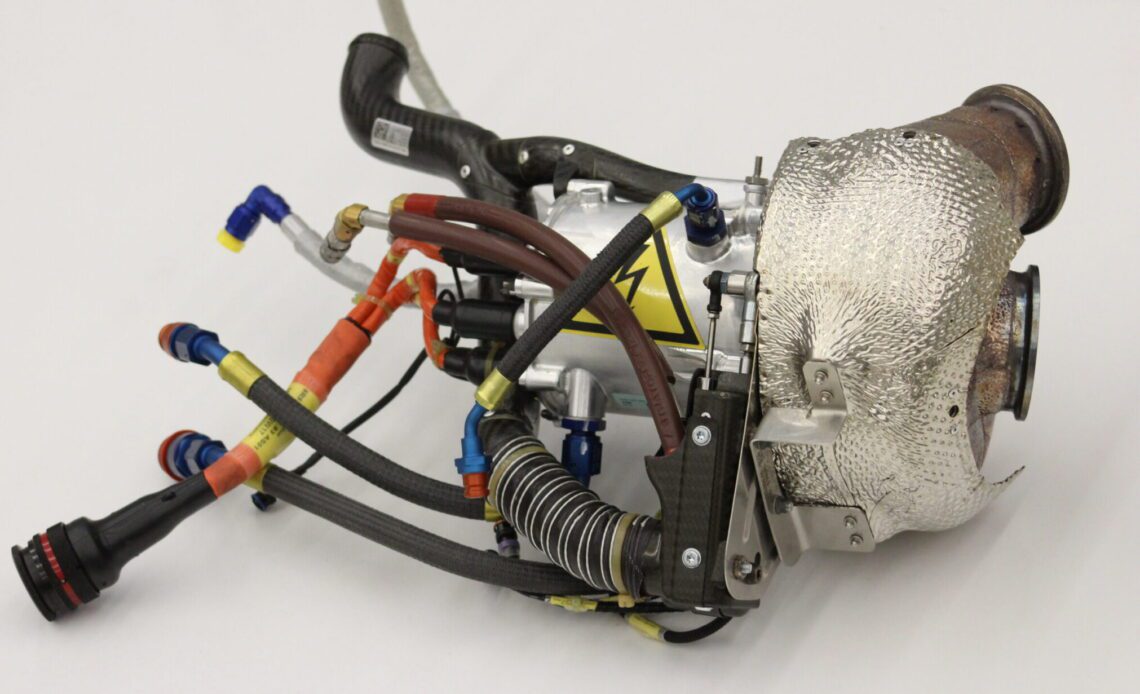Formula 1 is set to maintain the DI V6 turbo hybrid power units for the foreseeable future. However, after extensive discussions with the current and some intent OEMs, the next generation, set to arrive in 2026, will contain some crucial recipe changes. One of the most significant is eliminating the turbocharger shaft-mounted e-Turbo-style heat energy recovery system (H-ERS). The H-ERS is a motor-generator unit mounted on the turbocharger shaft of a Formula 1 internal combustion engine. The unit converts the heat energy from the exhaust gases into electrical energy. The electrical energy is then used to power the car’s electrical driveline (either charging the battery or directly deployed to the kinetic energy recovery unit) to boost the power unit’s performance. It’s arguably the most significant performance differentiating system onboard the power unit.
Understanding how this primary performance driver has been eliminated from the regulations is about understanding the parties interested in entering in 2026 – namely Volkswagen Group. The Volkswagen Group’s Porsche Motorsport outfit has kept its eye on Formula 1’s power unit evolution for over a decade. It even developed a current spec V6 before scrapping its Formula 1 entry evaluation program. These efforts were scrapped because Porsche didn’t agree with the turbocharger shaft-mounted e-Turbo style H-ERS. It felt it was hugely expensive to develop and had little road car powertrain relevance.
It began discussions with Formula 1 about scrapping the e-Turbo style H-ERS and running the DI V6 turbo power unit either without an H-ERS or using a style of H-ERS it had developed in its 2014-2017 WEC campaign – specifically, the turbocharged 2.1 litre 9R9 V4 with H-ERS that powered its three-time Le Mans-winning 919 LMP1 hybrid prototype. Porsche recognised Formula 1 and the LMP1 rules had one fundamental similarity – they were both fuel flow-limited formulas, which meant to be powerful, they needed to be efficient. Fuel flow has been the overarching limitation on the performance of Formula 1 hybrids and prototype engines since 2014. But prototype power units had relatively few restrictions when Formula 1 insisted on using gasoline direct-injected 1.6 litre V6 turbo married to an H-ERS on the turbo shaft. People often talk in awe of the efficiency of today’s Formula 1 power units. Still, they demonstrate what is possible only within a type of power unit the FIA prescribed. The…
Click Here to Read the Full Original Article at Racecar Engineering…

